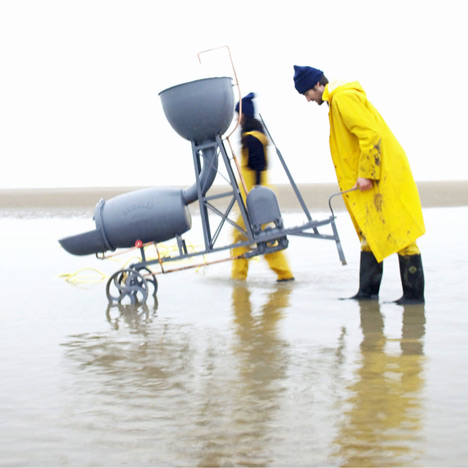
The Sea Chair by Alexander Groves, Azusa Murakami and Kieren Jones
What if plastic polluting the seas could be harvested by a retired fishing trawler, then transformed into chairs by an onboard factory?

The Sea Chair project by Royal College of Art graduates Alexander Groves, Azusa Murakami and Kieren Jones proposes just that - sorting through the plastic debris for tiny pellets used in injection moulding machines.
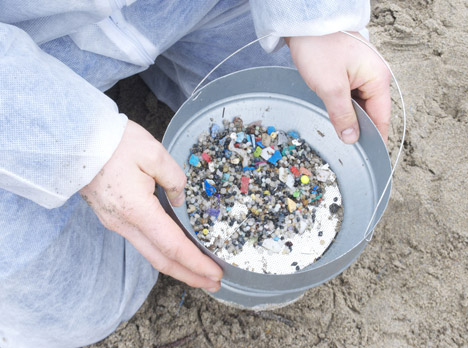
The designers claim that 13,000 of these pieces of virgin material are floating in every square mile of ocean, spilled in transit or leaked from factory storage.
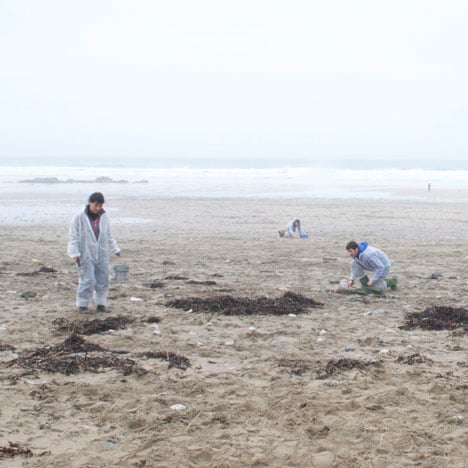
They've built a machine to scoop along the shoreline and sort the debris by size, using a floatation tank to separate out other, denser materials, and trialled it on the beach at Porthtowan, England.
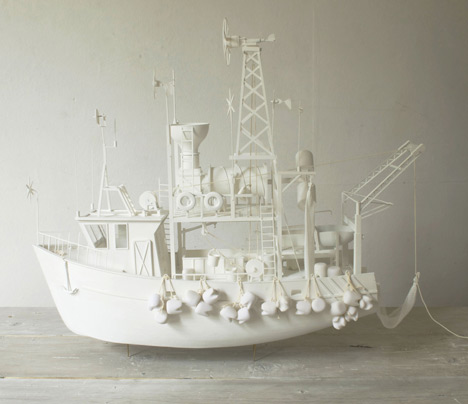
Their work has been nominated for the Victorinox Time To Care Award and you can vote for it here. "If the project gets enough votes to take us into their top three, we would secure enough money to see our project fully funded," says Kieren Jones. If successful the designers intend to show a set of chairs made by the trawler in Milan next April.
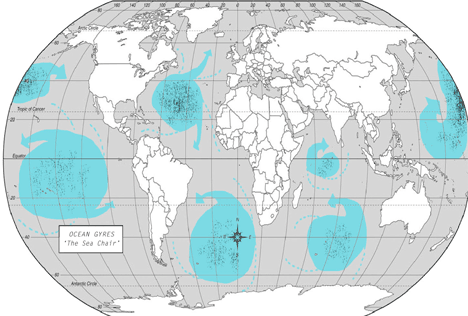
They presented the project at Show RCA earlier this summer and it will be on show at Sustain RCA during the London Design Festival next month.
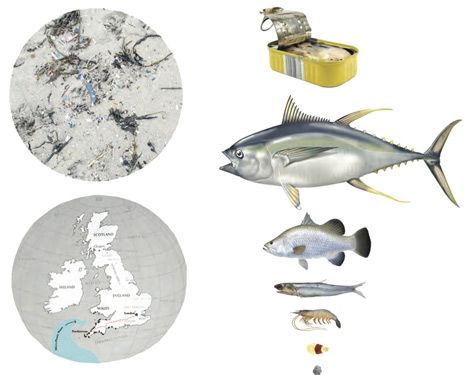
This isn't the first project on Dezeen to tackle plastic pollution: last summer the Plastiki boat made of plastic bottles sailed from across the Pacific Ocean from San Francisco to Sydney to raise awareness of the problem and at DMY Berlin this year Dirk Vander Kooij presented a robot that prints plastic chairs made of recycled refrigerators.
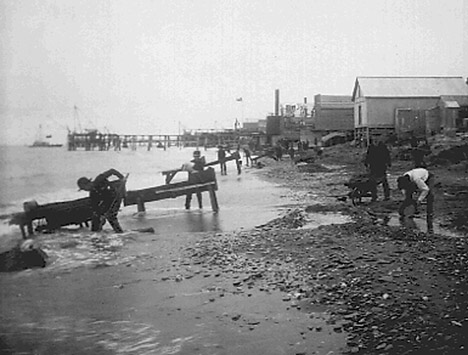
The information that follows is from the designers:
London designers Alexander Groves, Kieren Jones and Azusa Murakami are proposing to turn a retired fishing trawler into a plastic chair factory, fishing plastic from the polluted seas and beaches around the South West of the UK. Their ‘Sea Chair’ project has been shortlisted for the Victorinox Time To Care Award, -to support the project, please cast your vote by visiting and help make the project a reality.
The Sea Chair project proposes to turn a retired fishing trawler into a plastic chair factory, fishing the plastic from the polluted seas and beaches around the South West coast of the UK.
The Sea Chair project looks to address the problem of accumulating plastic in our oceans by raising awareness and removing plastic that will continue to circulate for thousands of years.
With increasing EU quotas, competition from large commercial trawlers and not to mention depleting fish stocks, Britain’s fishing industry really is in crisis.
Further afield, a ‘plastic soup’ of waste floats in the Pacific Ocean. Growing at an alarming rate it is already double the area of the United States. The ‘Pacific Garbage Patch’ as it’s known, stretches from the coastlines of California to the shores of Japan.
Since the discovery of ‘The Pacific Garbage Patch’ 5 more have been found across the World’s Oceans with the Atlantic gyre predicted by many scientist to be even larger. This plastic waste doesn’t sink and takes thousands of years to degrade, remaining in the environment to be broken up into ever-smaller fragments by ocean currents. As our society’s consumption grows the concentration of this plastic soup increases.
These fragments include a large amount of nurdles or ‘mermaids tears’, which are the plastic pellets that are the virgin raw material for injection moulding. These nurdles can be found littered on almost every shoreline in the world.
During our research trip to Porthtowan beach we discovered the most prevalent marine litter was plastic pellets, known in the plastics industry as ‘nurdles’. These pellets are around 2mm in diameter & represent an estimated 10% of all marine litter worldwide, their small size means they aren’t picked up by waste systems and being buoyant they will float on the sea surface taking over a thousand years to biodegrade.
These Nurdles haven’t been injection molded yet, but rather have been lost through spillage in transit and poor storage at factories.
The nurdles act as a sponge for harmful chemicals such as polychlorinated biphenyls (PCBs) in concentrations up to a million times greater than the surrounding seawater. Resembling fish eggs they enter the food chain raising the toxicity of our fish.
More than 250 quadrillion nurdles will be made this year and The United Nations (UN) states 13,000 nurdles are floating in every square mile of the ocean, however the concentration of these varies greatly according to currents and weather conditions.
Porthtowen Beach has been identified as one of the most polluted beaches in the UK for micro plastic due to it being a deposit shoreline that through its unique topography collects great amounts of sea plastic and makes it an ideal place to pan for nurdles.
Currently beach cleaning tractors remove the large plastic debris from the beach but micro plastic remains quite elusive. We have been developing methods and tools for collecting and separating the micro plastic from the other debris to be used again.
During the early part of the century, Britain’s coastline was a flourish of industrial activity, and beaches like Porthtowan were not just trawled for fish but also mined for precious metals.
Much like the early miners, we have taken inspiration from this rich heritage and produced a sluice-like contraption that has allowed us to sort vast quantities of marine debris quickly and efficiently.
The Nurdler consists of a hand powered water pump, and sorts the micro plastic from the stradline grading the particulates by size and using a floatation tank to separate the denser materials from plastic.
Alongside this contraption, and with the help of the local fisherman, we would like to fabricate plastic chairs that support their community and make use of their rich and diverse skill sets. With the E.U unveiling plans to pay fisherman for plastic by-catch, advances in the development of nets for collecting plastics with minimal damage to marine wildlife and by collecting washed up plastic on shore we have designed a floating factory ship that recycles this marine waste into sea chairs.
Please support this on-going project and help make the ‘Sea Chair’ a reality by voting for it here.